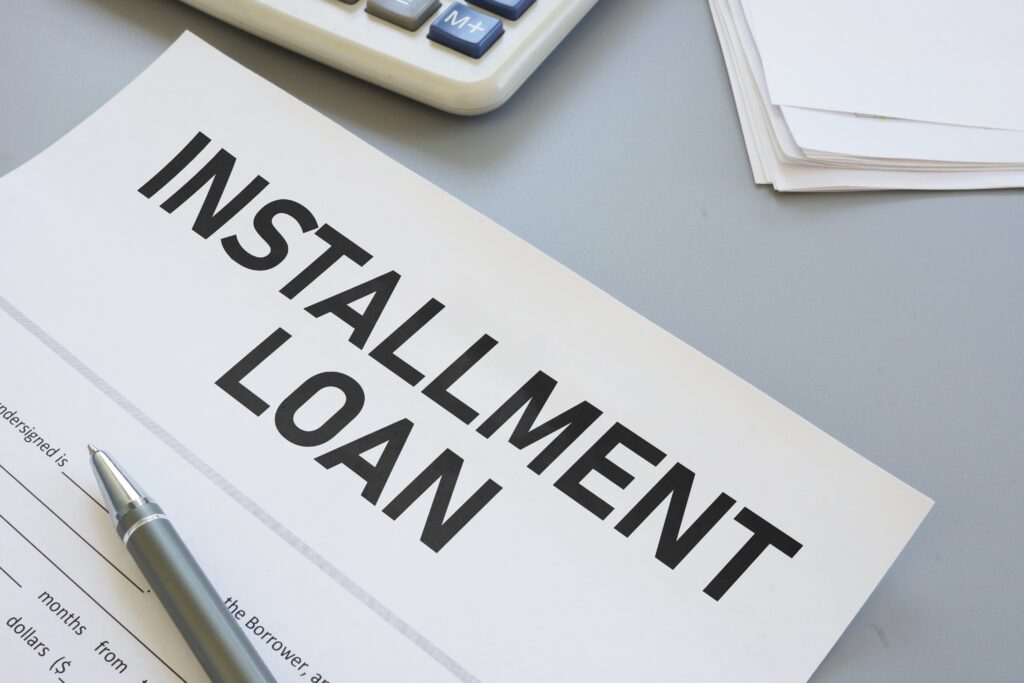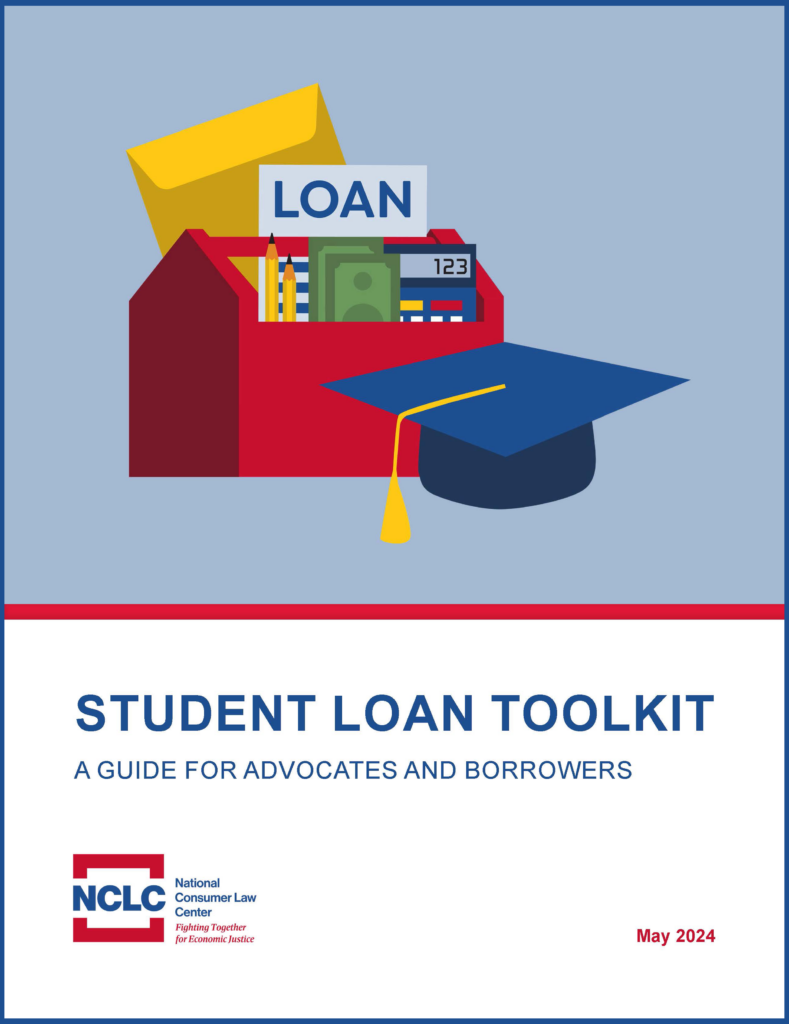![]()
Former President Donald Trump and other Republican 2024 presidential candidates spoke about the Silicon Valley Bank debacle this weekend, giving the first hints of their different approaches to the markets.
GOP presidential candidate blames Silicon Valley bank failure
Where the highest home insurance rates by state are: #1 won’t surprise you!
2. Louisiana
|
Average home insurance rate per month
|
Average home insurance rate per year
|
|
$476
|
$5,710
|
Following closely in second place is Louisiana, where hurricanes are a major threat to every resident’s property, livelihood, and safety. The deadly Hurricane Katrina stunned the nation in 2005, when it wreaked havoc in New Orleans. Due to this, Louisiana’s homeowners’ insurance market is in shambles and policy costs keep rising.
3. Nebraska
|
Average home insurance rate per month
|
Average home insurance rate per year
|
|
$427
|
$5,121
|
Aside from the weather conditions, Nebraska’s home insurance rates are also at an all-time high due to increasing fees for roof replacement caused by hailstorms. This makes it land in the no. 3 spot of our list. Blizzards and drought also play a role in other house repairs, causing high insurance claims.
4. Oklahoma
|
Average home insurance rate per month
|
Average home insurance rate per year
|
|
$390
|
$4,675
|
Taking the fourth place is Oklahoma where drastic changes in the weather drive up not just the insurance premiums for houses but also car insurance costs. Oklahoma faces numerous natural calamities per year including hurricanes, windstorms, tornadoes, and hailstorms.
5. Mississippi
|
Average home insurance rate per month
|
Average home insurance rate per year
|
|
$357
|
$4,289
|
Hurricane-prone Mississippi is at the fifth spot of our list of highest home insurance rates. Its average insurance rate of $4,289 per year is nearly double the national average. Shifting climate causes property perils in this state. Plus, the temperature is humid, resulting in heavy downpours. In turn, Mississippi’s harsh weather conditions cause insurance rates to climb.
6. Texas
|
Average home insurance rate per month
|
Average home insurance rate per year
|
|
$337
|
$4,039
|
At no. 6 is Texas, where the temperature is relatively warm and humid Like Mississippi. Still, Texas experiences heavy rains in the spring and in the beginning of autumn.
RugCheck: How To Avoid Token Rugpull Scams
A rugcheck is a process used to assess the legitimacy and safety of crypto tokens, aiming to identify potential scams known as “rug pulls”. Rug pulls are a pervasive threat in the cryptocurrency landscape, particularly within decentralized finance (DeFi). In a rug pull, developers suddenly remove all liquidity from the pool or abandon a project, akin to “pulling the rug” out from under investors. This leaves them with worthless tokens and significant losses.
This guide explores the concept of rug pulls, how to conduct a thorough rug check, and the role of tools like Rugcheck.xyz and De.Fi Scanner in mitigating risks.
Conducting a rug check involves evaluating various aspects of a token and its associated project, including:
- Token Distribution: Analyzing how tokens are allocated among holders to detect any concentration that could indicate a risk of manipulation.
- Liquidity Details: Ensuring that the token’s liquidity is locked, preventing developers from withdrawing funds abruptly.
- Contract Ownership: Verifying whether the contract ownership has been renounced, which limits the developers’ ability to alter the contract maliciously.
- Developer Transparency: Investigating the credibility and transparency of the development team to assess their trustworthiness.
- Marketing and Community Engagement: Evaluating the project’s marketing strategies and community interactions to identify any signs of unrealistic promises or aggressive promotion.
By performing a thorough rug check, investors can make more informed decisions and reduce the risk of falling victim to fraudulent schemes in the cryptocurrency space.
Understanding Rug Pulls
A rug pull is a type of scam where developers exploit a cryptocurrency project to defraud investors, typically by draining liquidity or manipulating the smart contract.
How Rug Pulls Work:
- Creation and Hype: Scammers create a token and promote it aggressively on social media platforms like Twitter and Telegram.
- DEX Listing: The token is listed on a DEX with a significant liquidity injection to appear legitimate.
- The Pull: Once enough investors buy into the project, developers drain the liquidity pool, leaving investors with worthless tokens. This abrupt action effectively removes all value from the project, often resulting in significant financial losses for those who invested.
These scams can be divided into two main categories: technical rug pulls and generalized rug pulls.
Technical Rug Pulls
From a technical standpoint, rug pulls involve specific exploits of a project’s smart contract. Common techniques include:
- Mint Function Exploits: Developers embed unchecked mint functions, allowing them to create unlimited tokens and dilute the value of existing holdings.
- Transfer Fee Exploits: Contracts with excessive transfer fees (e.g., 100%) can make transactions impossible, effectively locking investors’ tokens.
- Pausing and Blacklisting: Smart contracts with controls that allow developers to pause or restrict token transfers arbitrarily, leaving investors unable to sell.
- Honeypots: Contracts designed to trap investors by preventing fund withdrawals while promising high returns.
- Liquidity Removal: Draining liquidity from decentralized exchanges, making tokens unsellable.
- MasterChef Contract Exploits: Yield farming contracts manipulated to allocate tokens disproportionately to developers, causing price crashes.
Generalized Rug Pulls
Beyond technical exploits, rug pulls can also encompass broader forms of fraud, including:
- Pump and Dump Schemes: Artificially inflating a token’s price before mass sell-offs.
- False Marketing: Misleading claims about partnerships or features that do not exist.
- Exit Scams: Developers disappearing after raising significant funds.
- Soft Rugs: Projects where developers appear active but make minimal efforts, eventually abandoning the project while collecting treasury payments.
By understanding both the technical and generalized forms of rug pulls, investors can better identify and avoid these scams.
Real-World Examples of Rug Pulls:
- The Quant Kid (2024): A young individual live-streamed the creation of a memecoin called $QUANT on Solana’s Pump.fun platform. Shortly after, he executed a rug pull by selling 51 million tokens for 128 SOL (~$30,000). Ironically, the community rallied and drove the token’s value up, with the same tokens later valued at $4 million, making the incident a cautionary tale about the volatility and risks of meme coins.
- Squid Game Token (2021): Exploiting the Netflix show’s popularity, scammers made off with $3.3 million after creating “Squid Coin.”
- AnubisDAO (2021): Promising a decentralized project, developers raised $60 million in Ether (ETH) before disappearing.
Given the complexity and variety of rug pulls, tools like Rugcheck.xyz and De.Fi Scanner are invaluable for simplifying the evaluation process. Let’s dive deeper into how they help.
The Role of Rug Checkers
Rug checkers are essential tools for analyzing cryptocurrency projects, detecting red flags, and helping investors make informed decisions. These tools assess various aspects of a project, such as token distribution, contract ownership, and liquidity.
Why Use a Rug Checker?
The volatile and unregulated nature of the crypto market makes it a prime target for scammers. Rug checkers like Rugcheck.xyz and the De.Fi Scanner act as the first line of defense, empowering users with data to mitigate risks and protect their investments.
With a clear understanding of their importance, let’s look at how specific tools like Rugcheck.xyz cater to different ecosystems, starting with Solana.
Rugcheck.xyz: A Solana-Focused Rug Checker
Rugcheck.xyz specializes in analyzing Solana-based tokens. Its straightforward interface and detailed analysis make it a valuable resource for navigating the Solana ecosystem.
How to Use Rugcheck.xyz
- Access the Tool: Visit rugcheck.xyz.
- Enter the Token Address: Obtain the Solana token’s contract address from platforms like DEX Screener or Etherscan.
- Review the Report: Rugcheck.xyz generates a detailed analysis highlighting risks such as minting permissions, liquidity issues, and ownership concentration.
- Decide on Investment: Use the analysis to evaluate the token’s risks before investing.
The De.Fi Scanner: A Cross-Chain Alternative
While Rugcheck.xyz is tailored for Solana, tools like the De.Fi Scanner operate across multiple EVM-compatible chains, including Ethereum, BNB Chain, Avalanche, and Polygon.
Key Features of the De.Fi Scanner
- Automated Risk Detection: Instantly generates a rug pull probability report for tokens, NFTs, and smart contracts.
- De.Fi Score: Provides an aggregated score to summarize a project’s risk level.
- Red Flag Identification: Highlights risks such as:
- Ownership Not Renounced: Developers retaining control to modify contracts.
- Minting Functions: Potential for unlimited token creation.
- High Dump Risk: Tokens concentrated in a few wallets.
- Honeypots and Liquidity Issues: Detection of traps and insufficient liquidity locks.
How to Use the De.Fi Scanner
- Identify the token’s contract address from a trusted source.
- Input the address into the scanner’s search form.
- Interpret the report, focusing on flagged issues and the overall De.Fi Score.
Beyond RugChekers: Best Practices to Avoid Rug Pulls
While tools like Rugcheck.xyz and De.Fi Scanner are invaluable, they should be part of a broader strategy that combines automated analyses with manual due diligence. To protect your investments, follow these best practices:
1. Verify Token Contract Addresses
Always double-check token contract addresses against official sources, such as the project’s website or social media accounts. Using incorrect or fraudulent addresses can lead to misleading analyses and potential losses.
2. Examine Token Distribution
Use blockchain explorers to analyze token allocation among holders. Be cautious of projects where non-team wallets hold more than 5% of the total supply unless those tokens are locked, as such concentration increases the risk of market manipulation or sudden dumps.
3. Verify Liquidity Locks
- Ensure the token’s liquidity is locked and verify the duration of the lock.
- Locked liquidity reduces the risk of developers withdrawing funds abruptly and rendering the token unsellable.
- Avoid tokens where developers maintain full control over the liquidity pool.
4. Investigate Developers
- Evaluate the credibility of the development team, even if they are anonymous.
- Look for verifiable activity on platforms like GitHub, Twitter, or LinkedIn.
- Be cautious of teams with no track record or history of involvement in other scams.
5. Assess Promised Returns
Be wary of projects offering exceptionally high returns on investment (ROI) or annual percentage yields (APY). Unrealistically high promises are often red flags for unsustainable projects or scams.
6. Examine Audit Reports
- Prioritize projects with independently audited smart contracts.
- Verify the authenticity of the audits and review the reports directly. Do not rely solely on a project’s claim of being “audited.”
7. Analyze Project Quality
Projects with low-quality websites, vague or plagiarized whitepapers, and minimal innovation often indicate a lack of effort and higher scam potential. Avoid projects that cannot clearly communicate their goals or provide tangible deliverables.
8. Monitor Wallet Permissions
Use tools like De.Fi Shield to review wallet permissions for vulnerabilities. Revoke potentially harmful permissions with a single click to enhance the security of your funds and reduce exposure to exploits.
9. Recognize Red Flags
Educate yourself about key indicators of a rug pull, including:
- Unrenounced Ownership: Retention of contract control by developers.
- Minting Functions: The ability to create additional tokens arbitrarily.
- Suspicious Transfers: Large token movements to unknown wallets.
- Locked or Restricted Trading: Contracts that limit who can buy or sell tokens.
10. Be Cautious of Stealth Mints (For NFTs)
Avoid NFT projects employing “stealth mints,” which often create artificial hype and increase rug pull risks. These tactics are designed to manipulate demand without transparent planning or execution.
By combining automated tools like Rugcheck.xyz with these proactive steps, you can significantly reduce your risk of falling victim to fraudulent schemes. Remember, no tool or strategy is foolproof; continuous vigilance and critical thinking are essential in navigating the volatile cryptocurrency landscape.
RugChekers Comparison: Rugcheck.xyz vs De.Fi Scanner
If you’re exclusively focused on Solana projects, Rugcheck.xyz is tailored for you. However, for investors operating across multiple blockchains, De.Fi Scanner provides a broader range of features and cross-chain compatibility.
| Feature | Rugcheck.xyz | De.Fi Scanner |
| Supported Chains | Solana | EVM-Compatible (ETH, BNB, etc.) |
| Automated Reports | Yes | Yes |
| Risk Indicators | Minting, Ownership, Liquidity | Ownership, Honeypots, Dump Risk |
| Additional Tools | No | Wallet Permissions Manager |
For Solana users, Rugcheck.xyz offers a focused approach. For multi-chain investors, the De.Fi Scanner provides broader functionality.
Conclusion
Rug pulls are a persistent threat in the crypto ecosystem, but tools like Rugcheck.xyz and De.Fi Scanner provide crucial protection. By combining these tools with thorough research and security best practices, investors can navigate the crypto landscape with greater confidence and reduce the risk of falling victim to scams.
Beyond tools and best practices, staying informed about new types of scams and evolving security practices is vital. Regularly educating yourself about crypto trends and engaging with trusted community resources will further enhance your ability to navigate this volatile landscape.
Remember: no tool is foolproof. Always stay vigilant and use multiple layers of security to safeguard your investments.
Frank N. Darras was named a Top Healthcare Lawyer in California by the Los Angeles Daily Journal
The Los Angeles Daily Journal published its list of the Top 30 Healthcare Lawyers in California and for the 3rd consecutive year, Frank N. Darras was named to the list. Mr. Darras is a fierce advocate for people battling insurance companies, specifically long term permanent and whole disability claims. People who’ve suffered some sort of long term disability turn to Mr. Darras to get help in their cases, and time and again he’s shown himself to be the best LTD attorney in America.
Visit our Honors and Awards page

What is an Installment Loan?

An installment loan is a type of financing repaid through regular, scheduled payments over a set period. Unlike revolving credit, such as credit cards that allow ongoing borrowing up to a limit, installment loans are issued as fixed amounts with defined repayment terms. They are commonly used for substantial purchases or expenses, such as financing a car, buying a home, or covering educational costs. This guide explores how these loans work, reviews common examples, and discusses their advantages and potential drawbacks.
Types of Installment Loans
This category of loans comes in various forms, each tailored to different financial goals and needs. Here are some common examples of installment loans:
Personal Installment Loans
Personal loans are versatile and can be used for debt consolidation, medical expenses, or unexpected costs. Typically unsecured, they don’t require collateral, which may result in higher interest rates to offset the lender’s risk. Personal loans are generally available for various amounts, making them suitable for many financial needs.
Auto Loans
Specifically designed for vehicle purchases, auto loans are secured by the car itself, allowing for lower interest rates compared to unsecured loans. These loans offer fixed terms, usually ranging from five to eight years, and predictable monthly payments, making them a convenient choice for purchasing a car.
Mortgage Loans

Mortgage loans provide long-term financing for home purchases. Secured by the property, they generally offer lower interest rates due to the extended terms, ranging from 15 to 30 years. Mortgages are ideal for buyers seeking stable, long-term financing and are often tailored to fit the borrower’s financial profile, offering fixed or adjustable rates.
Student Loans
Student loans cover educational expenses like tuition, books, and housing. They often come with flexible repayment terms and allow for deferred payments until after graduation, making them a feasible option for students. Both government-backed and private student loans are available, with installment payments structured to make education more accessible.
Debt Consolidation Loans
Debt consolidation options enable borrowers to combine multiple high-interest debts, like credit card balances, into one structured payment plan. This consolidation can streamline finances and potentially lower overall interest costs, simplifying repayment and reducing the monthly burden for borrowers.
Secured Loans
Secured loans require collateral, such as a boat, ATV, or jewelry, which serves as a guarantee for the lender. This setup lowers the lender’s risk, often resulting in lower interest rates while allowing borrowers access to funds by leveraging their assets. Secured loans may be easier to qualify for compared to unsecured options.
Unsecured Personal Loans
Unlike secured options, unsecured loans don’t require collateral and are commonly used for expenses like travel or emergencies. Due to the lack of collateral, these loans generally have slightly higher interest rates and may have stricter qualification requirements for borrowers with limited credit histories.
But How Do Installment Loans Work?

You might still be asking yourself how online installment loans work. These loans consist of three main elements: the principal (amount borrowed), the interest rate, and the loan term (duration of repayment). These factors determine the monthly payments and the overall cost of the loan.
Repayment Structure
Installment loans feature consistent monthly payments, allowing borrowers to budget for repayments over the set term. Each payment covers a portion of both the principal and interest, helping reduce the balance over time. The interest rate, whether fixed or variable, significantly affects the loan’s total cost. Higher rates increase overall repayment amounts, making it essential for borrowers to compare terms and fully understand the effect of interest before committing to a loan.
Pros and Cons
Pros
Predictable Payments
With fixed monthly payments, these loans make budgeting straightforward, allowing borrowers to plan their finances around a stable, predictable amount each month. This predictability can offer peace of mind and a clear path to repayment, particularly for those with fixed incomes.
Access to Larger Loan Amounts
They provide access to larger sums than revolving credit options like credit cards, often with more favorable interest rates. This makes them ideal for significant purchases, such as a home or vehicle, where a lump-sum payment is necessary. The structured repayment also allows for cost-effective financing over time.
Potential Positive Credit Impact
Consistently making on-time payments can improve your credit score, demonstrating responsible debt management to lenders. Unlike credit card debt, which affects your credit utilization ratio, fixed-balance loans decrease with each payment, potentially contributing positively to your credit profile over time.
Cons
Interest Costs and Fees
Interest costs can accumulate over long repayment periods, especially at higher rates. Borrowers should consider the total repayment amount, including interest, to ensure they’re comfortable with the loan’s total cost. For those taking out long-term loans, interest can significantly impact affordability.
Risk of Over-Borrowing
Access to larger loan amounts may tempt some borrowers to take on more debt than necessary, potentially leading to financial strain. To avoid overborrowing, it is essential to borrow only what you can comfortably repay within your income and expense structure.
Potential Credit Impact of Missed Payments
Missing payments can harm your credit score, as lenders report late payments to credit bureaus. Since these loans require the full monthly payment, staying on schedule with repayments is crucial for maintaining a healthy credit standing.
Installment Loans vs. Payday Loans
While both types provide access to funds, installment and payday loans differ substantially in terms of cost and structure. Payday loans are typically small, short-term loans intended for repayment by the next payday. Due to their short repayment periods and high fees, payday loans often carry a significantly higher cost than installment-based options, especially when factoring in the annual percentage rate (APR).
If a payday loan isn’t repaid on time, borrowers may need to roll it over for an additional fee, which can create a cycle of debt. For example, a payday loan of $500 might incur a $75 fee for a two-week term. If the loan is rolled over multiple times, this fee escalates, creating financial strain and making payday loans challenging to repay.
In contrast, structured loans with defined terms offer predictable repayment schedules, with a set term and interest rate, allowing borrowers to spread payments over a longer period. This predictability and lower relative cost make fixed-term loans a more practical choice for those needing manageable, long-term financing.
Apply for an Installment Loan with Wise Loan

Applying for this type of loan involves determining the amount needed, providing information on income and current debts, and undergoing a credit check. Lenders that offer same day funding like Wise Loan use this information to assess creditworthiness and determine the loan’s terms, including the interest rate.
These loans can support larger purchases, debt consolidation, or unexpected expenses. Understanding the loan’s structure, interest rate, and total repayment cost is essential for making a financially sound decision and ensuring you’re prepared to manage payments responsibly. To help with this process, consider applying with Wise Loan today!
The recommendations contained in this article are designed for informational purposes only. Essential Lending DBA Wise Loan does not guarantee the accuracy of the information provided in this article; is not responsible for any errors, omissions, or misrepresentations; and is not responsible for the consequences of any decisions or actions taken as a result of the information provided above.
More information on Installment Loans and how they work in your state:
Minimum Credit Score Requirements For a Business Loan (Nov 2024)
Business loan credit score requirements vary based on many factors. Different lenders (even non-traditional lenders) might look at the same business loan requirements and weigh their importance differently.
Before you go into the bank, you’ll want to know where you stand with these four very important metrics:
- Your credit score—both your personal and business score (yes, there is more than one)
- Years in business—most banks want to see two or more
- Your annual revenues—more is better than less
- Your collateral—there are different types of collateral, depending upon the type of loan you’re looking for
Credit score is number one for a myriad of reasons. It’s the most important metric and is the cause of most rejections. Although there is hope for business owners with less-than-stellar credit, those options come with a cost. Minimum credit score requirements vary by loan type and lender, but you’ll have the most options available to you with a minimum credit score of 650.
Minimum credit score by loan type.
Here are the minimum personal credit score requirements for each type of business financing to get an idea of the options available to you.
| Type | Credit score requirement* |
| SBA loan | Minimums start at 615 |
| Term loan | Minimums start at 600 |
| Line of credit | Minimums start at 600 |
| Invoice factoring | Typically have no credit score requirement |
| Equipment financing | Minimums start at 520 |
| Business cash advance (Merchant cash advance) |
Minimums start at 500 |
| Commercial real estate | Minimums start at 650 |
Minimum credit score by lender type.
Here are the minimum personal credit score requirements for each type of business financing to get an idea of the options available to you.
| Type | Credit score requirement* |
| Bank/Credit Union | Minimums start at 700 |
| SBA Lender | Minimums start at 650 |
| Online lenders | Minimums range from 500-650 |
| CDFIs/Nonprofits | Varies widely. Some may have no credit score requirement. |
Why does credit score matter?
Credit scores play an influential role in securing a business loan. This three-digit number quantifies your fiscal responsibility and reliability, providing lenders with a quick, objective assessment of your credit risk.
In essence, a good credit score signals to lenders that you’ve consistently fulfilled your financial obligations to other lenders on time and are likely to repay their loans promptly. Consequently, businesses with higher credit scores are often offered more favorable loan terms, including lower interest rates and longer repayment periods.
Conversely, a bad credit score could denote a higher risk proposition for the lender, potentially leading to a rejected application or a higher interest rate and stringent loan conditions.
About personal credit scores.
One of the most commonly used personal credit scores is the FICO Score, developed by the Fair Isaac Corporation. The FICO Score is calculated based on five main components, each weighted differently:
- Payment history (35%) – This represents whether you’ve paid past credit accounts on time.
- Amounts owed (30%) – This includes the total amount of credit and loans you’re utilizing compared to your total credit limit, also known as your credit utilization ratio.
- Length of credit history (15%) – This considers the age of your oldest credit account, the age of your newest credit account, and an average of all your accounts.
- New credit (10%) – This comprises the number of new accounts you’ve opened or applied for recently, including credit inquiries.
- Credit mix (10%) – This takes into account the diversity of your credit portfolio, including credit cards, retail accounts, installment loans, mortgage loans, and others.
FICO credit scores range from 300 to 850. Here’s a general classification of FICO scores:
Bad credit: 300-579
Within a credit score of 300-579, you’ll struggle to qualify for business financing. Once your score gets above 500, you may qualify for a cash advance, equipment financing, or invoice factoring depending on the lender and whether you meet other requirements.
Fair credit: 580-669
With a fair credit score of 580-669, you’ll meet most minimum credit score requirements for a cash advance, invoice factoring, or equipment financing. If your score is 600 or above, you’re more likely to qualify for a line of credit or term loan.
Good credit: 670-739
Within this credit range, you’ll likely meet all lender’s minimum credit requirements for term, SBA, commercial real estate, and bank loans.
Very good credit: 740-799
Exceptional credit: 800-850
About business credit scores.
A business credit score, much like a personal credit score, is a numerical representation of a business’ creditworthiness. It provides a quick, objective snapshot of the financial health of a business and its ability to repay debts on time. The score is generated by credit bureaus such as Dun & Bradstreet, Equifax, and Experian, and ranges typically from 0 to 100.
The calculation of a business credit score considers several factors, including:
- Payment history – As with personal credit, timely repayment of debts is crucial. Regular, on-time payments to creditors enhance your business credit score.
- Credit utilization ratio – This measures how much of your available credit your business is currently using. A lower ratio (meaning you’re using less of your available credit) can positively impact your score.
- Length of credit history – Longer credit histories can benefit your business credit score, as they provide more data about your business’ long-term financial behavior.
- Public records – Bankruptcies, liens, and judgments can negatively affect your business credit score.
- Company size and industry risk – Larger companies and those in industries considered less risky may have higher credit scores.
Lenders will typically review both your personal credit score and business credit score when qualifying you for a business loan.
How to increase your credit score.
If your credit score isn’t where you’d like it to be, there are several steps you can take to boost your score.
Monitor your credit reports.
Equifax, Experian, and TransUnion are where you’ll want to go to see your current credit reports. Make sure the information is correct and that your credit report reflects reality. Make sure that the report is accurate and that accounts that aren’t yours aren’t reported. Bankruptcies that are over 10 years old or the associated accounts shouldn’t be reflected on the report. Other negative information older than seven years should also not be included in the report.
Get a major credit card.
Getting a credit card and using it wisely is one way to boost your credit. Be sure to make your payments on time.
Arrange automatic payments on every card or loan.
It’s easy to forget to make a payment when it’s due or let travel or a busy schedule distract you. However, credit scores are very sensitive to whether or not you make payments on time, so do all you can to keep your payments regular and on time.
Don’t let disputes go to collections.
If you have a dispute with a vendor and you allow it to escalate to collections, it doesn’t look good on your report. Rather than taking this path, it’s better to pay under protest and go to small claims court. Don’t get sued, though, as lawsuits and judgments are also major dings to your credit.
Consolidate your debt if you can’t pay it off quickly.
The scoring criteria treat installment loan balances kinder than the same balances on a credit card. But be wise with your credit card balances and avoid running them up.
Take debt off your credit report entirely.
This is a tough one, but family, friends, or dipping into your retirement plan is sometimes a good way to get credit off your report entirely. Be careful about dipping into your 401k. If you borrow from a 401k and repay it there are no tax consequences, but if you withdraw money, there will be tax consequences.
Don’t close accounts or let them be closed.
It might not help your scores and could hurt them. If you’ve got a card you haven’t used for a while, take it out to dinner or buy a tank of gas, just make sure they’re included with your other automatic payments.
Don’t apply for credit you don’t need.
At about five points an application, if you have sketchy credit, it can add up.
Depending on how bad your score looks today, you might need to invest some time—but there is hope. Just remember, your credit score is the first thing any lender will look at before they offer you a small business loan.
Ready to compare business loan options? Apply for a small business loan.
Quickly compare loan offers from multiple lenders.
Applying is free and won’t impact your credit.

*The information contained in this page is Lendio’s opinion based on Lendio’s research, methodology, evaluation, and other factors. The information provided is accurate at the time of the initial publishing of the page (Feb 5, 2024). While Lendio strives to maintain this information to ensure that it is up to date, this information may be different than what you see in other contexts, including when visiting the financial information, a different service provider, or a specific product’s site. All information provided in this page is presented to you without warranty. When evaluating offers, please review the financial institution’s terms and conditions, relevant policies, contractual agreements and other applicable information. Please note that the ranges provided here are not pre-qualified offers and may be greater or less than the ranges provided based on information contained in your business financing application. Lendio may receive compensation from the financial institutions evaluated on this page in the event that you receive business financing through that financial institution.
🎁 Refer a Friend: Give the Gift of Investing This December
December is a time of giving. And what better gift to share than the gift of financial growth? This holiday season, it’s easy to help your loved ones start their investment journey with us. When you refer a friend to invest with Go & Grow, you can both earn cash rewards.

Why Go & Grow is a great gift for new investors
Investing doesn’t have to be complicated. With Go & Grow, your loved ones can enjoy:
- Hassle-free investing: It’s simple to start, even for beginners.
- Attractive returns: Earn up to 6.75% p.a.* while you build your wealth.
- Fast access to your money: Withdraw funds quickly whenever needed.
- Low minimum investment: Start with as little as €1.
It’s not just an investment; it’s the gift of financial empowerment.
How to refer a friend and earn rewards
Referring a friend is easy:
- Log in to your Bondora account and head to the Refer a Friend page.
- Share your unique referral link with friends, family, or anyone ready to start investing.
- When they sign up and invest with Go & Grow, you both receive €5 each on your Bondora account!
It’s a win-win for everyone. Your friend kickstarts their investment journey, and you get a little extra for helping them get started.

Refer a Friend: Investing is the gift that keeps on giving
Unlike fleeting holiday purchases, investing with Go & Grow is a gift that grows in value over time. Whether it’s your friend’s first step toward financial freedom or a boost to their existing portfolio, this is a gift they’ll appreciate long after the holiday season ends.
Don’t wait to spread the word. December is the perfect time to introduce your loved ones to the simplicity and potential of Go & Grow—and get rewarded for doing so.
Make this holiday season about more than just gifts. Make it about building brighter financial futures—together.
Los Angeles Disability Claim Lawyer
The Long-Term Disability Carrier Wants Me to Apply for Social Security Disability – Am I Required to Apply for Social Security Disability?
If you are currently receiving Long-Term Disability (LTD) benefits under a group sponsored by your employer, or if you are dealing with a claim that has been denied, the claim administrator (usually an insurance company funding the plan) has probably informed you that you are required to apply for Social Security Disability Income (SSDI). It is important that you review the insurance policy, specifically the “offset provisions” that describe what other sources of income the disability insurance company is entitled to subtract from your monthly LTD benefit.
What is an offset?
An offset is money that you are receiving from another source (i.e., State Disability, Workers’ Compensation Benefits, SSDI, a retirement benefit, etc.) that the policy subtracts from your monthly LTD benefit. The policy will identify all sources that it is entitled to offset from your monthly LTD benefit. SSDI is a common offset that you will see in disability insurance policies insuring a group disability plan.
Why Am I Required to Apply for Social Security?
If you are potentially entitled to receive an award of SSDI, the LTD policy will probably require that you actively pursue this benefit. If you chose not to apply for Social Security, and you have been approved for LTD benefits, the policy’s offset provision will typically entitle the claim administrator to estimate your monthly SSDI benefit and offset it from your LTD benefit. In other words, if you are receiving LTD benefits and you decide not to pursue SSDI, the LTD carrier may be permitted (pursuant to the terms of the policy) to subtract money from your monthly LTD benefit that you are not actually receiving (but were potentially entitled to receive). Therefore, it is generally not a good idea to forego applying for SSDI if the LTD policy requires that you apply for it.
One reason that you may want to delay the application for Social Security is that you do not have sufficient medical evidence to support your claim. You should consult an experienced Social Security lawyer about when it is proper to apply for SSDI.
What Happens if I Have Been Receiving LTD Benefits for Months or Years and
Then I Receive a Retroactive Award of SSDI.
If your LTD claim is approved before your SSDI claim has been approved, or before you apply for SSDI, the claim administrator on the LTD claim will decide how to handle the offset issue. If you provide the claim administrator on the LTD claim with proof that your SSDI claim is pending, they will generally pay the monthly LTD benefit without offsetting an estimated SSDI benefit. However, as indicated above, if you do not apply for SSDI, the claim administrator will ultimately be entitled to estimate your SSDI benefit and deduct it from your monthly LTD benefit.
If you have been receiving a monthly LTD benefit without offset, and then you receive a retroactive award of SSDI, it will create an overpayment situation. In other words, you will owe some or all the retroactive award from the Social Security Administration back to the claim administrator on the LTD claim. The reason that you owe the LTD claim administrator money back is because you were overpaid in each month that you have already received an LTD benefit and now have been paid SSDI retroactively. If you have been receiving LTD benefits for several months, or maybe years, without SSDI being offset, and now you have been awarded SSDI, it will be important for you to contact the claim administrator on the LTD claim after you receive your benefits from Social Security. If there has been an overpayment, you will owe some or all the retroactively awarded money received from Social Security back to the claim administrator on the LTD claim.
Can Being Approved for SSDI Help My LTD Claim?
If your SSDI claim has been approved, the claim administrator on the LTD claim will not be bound by the decision made by the Social Security Administration. Likewise, if your LTD claim has been denied on appeal and you sue the LTD carrier and LTD plan in federal court, the court will not be bound by the decision made by the Social Security Administration. Nevertheless, the decision by the Social Security Administration may be offered as persuasive evidence in support of your LTD claim at the administrative appeal stage (when the claim administrator is reviewing your appeal). Even if your appeal is ultimately denied, and you sue in federal court, you will want the Social Security Administration’s decision to approve your SSDI claim to be a part of the LTD claim administrator’s file (the administrative record) so that it can be referenced by the court in that case.
If you have been denied by the claim administrator on the LTD claim at a point where the “own occupation” definition of disability is applicable, the SSDI award could carry significant weight because the Social Security Administration uses a more stringent “any gainful occupation” standard as part of its criteria it uses for awarding disability benefits.
What If I Have Been Denied Social Security Disability Income Benefits?
On average, the Social Security Administration denies nearly 60 percent of first-time SSDI applications. If you have been denied, it does not necessarily mean that you are ineligible. It is an indication you need to provide the Social Security Administration with additional information to allow that agency to properly reevaluate your application. You should consult with an experienced Social Security lawyer who can assist with your request for reconsideration.
Why Was I Denied Social Security Disability Income?
If you have been denied SSDI benefits by the Social Security Administration, it could be for any one of several reasons. The reason for being denied could range from any of the following:
- You did not work enough quarters;
- Your condition was not deemed severe enough to prohibit you from working at your occupation;
- Your condition does not meet or equal one of the Social Security’s severe impairment listings;
- You are able to perform the important duties of another occupation, given your age, education, and job skills;
- You have an outstanding warrant for your arrest for certain felony crimes, you were convicted of a crime and will go to jail, or you violated your probation or parole.
You should consult with an experienced Social Security lawyer to review the reason(s) that your application for SSDI was denied. An attorney can assist you in filing an appeal and represent you on your request for reconsideration. You must request an appeal in writing within 60 days of the Social Security’s decision, so it is imperative that you consult with a Social Security attorney as soon as possible.
If you have any questions regarding your claim for LTD benefits, and/or how an award of SSDI benefits may affect your claim, call Law Offices of Kevin M. Zietz for a free consultation.
Introducing NCLC’s Student Loan Toolkit

Whether you are just starting your student loan journey or have been dealing with student loan debt for decades, you can use NCLC’s newly created Student Loan Toolkit to help you take charge of your student loan situation and move forward. Download the toolkit today!
The Toolkit explains the basics of the student loan system, how to assess your own student loan situation, and your options for managing your student loan debt. It includes fillable pages where you can record your own student loan information to help you work through your situation and track your progress toward becoming debt-free. Finally, the Toolkit includes information on how and when to get additional help with your student loans, as well as other useful resources.
While the Toolkit is addressed to student loan borrowers, it can also be used by financial counselors, legal aid attorneys, and other advocates who work with people with student loan debt. The content is useful as a resource to borrowers, counselors, and attorneys alike, and the fillable pages can be used to guide meetings with borrowers, collect key information, and document information for the borrower to refer back to as needed.
The Toolkit was adapted from the National Consumer Law Center’s book, Surviving Debt. Surviving Debt has been a leading resource for nearly 30 years, providing practical advice on how to deal with crushing debt of all types. Surviving Debt is available for free online at library.nclc.org/book/surviving-debt. You can also purchase a print copy at library.nclc.org/SD/subscribe.
NCLC’s Toolkit and the Launch of the DFPI Student Loan Empowerment Network in California
NCLC created this Toolkit as part of an important new initiative launched this month to empower borrowers and expand access to free student loan support in California. This initiative, led by the California Department of Financial Protection and Innovation (DFPI), has created a new Student Loan Empowerment (SLE) Network. The SLE Network connects California student loan borrowers with free expert, trusted and personalized support that can break the detrimental cycles of debt and generational poverty. The SLE Network organizations are community-based and legal aid organizations that provide free financial coaching and legal assistance, including help signing up for income-driven repayment plans and applying for federal student loan forgiveness programs. NCLC, as the SLE Network Training and Quality Assurance partner, has developed the Student Loan Toolkit in collaboration with and support from DFPI.
For more information about the SLE Network, or to request help (for borrowers in California), visit studentloanhelp.dfpi.ca.gov or call (888) 774-2227.
MorganAsh’s Gething – Mortgage Strategy

The Financial Conduct Authority’s plans for a review of how firms are managing customer vulnerability come as “no surprise”, says MorganAsh managing director Andrew Gething.
Gething’s comments come after the FCA announcement last week outlining five features of a good Consumer Duty report and five areas for improvement.
The report comes as a result of a targeted and thematic review that the regulator carried out on the first annual Consumer Duty board reports from 180 firms.
As part of the rules, firms must prepare a report for its governing body setting out the results of its monitoring of consumer outcomes and any actions required as a result of the monitoring.
Gething says: “A simple check firms can undertake themselves is the number of vulnerable customers they have recorded.”
“A recent FCA survey revealed that 49% of portfolio managers and 69% of stockbrokers reported they had zero vulnerable customers – which should be a big red flag.”
“Since we know around 50% of consumers are vulnerable at any one time, and we are all vulnerable at some time in our lives, having zero vulnerable customers is incredibly improbable.”
The financial regulator says five features of a good report include clear outcomes focus, good quality data, analysis of different customer types, clear processes for production of the report and a focus on culture throughout the firm.
Meanwhile, the FCA suggests areas for improvement focus on better data quality, a comprehensive view across distribution chains, an analysis of different customer types, challenge from the board and taking effective action.
Gething states: “Many firms are still reporting the number of vulnerable customers in the single figures – so they are also falling well short. Some common errors include only being reactive to consumers volunteering information when the consumer contacts the firm, thus only assessing a subset of customers – firms need to be proactive and attempt to assess all customers.”
“Also, relying on consumers to volunteer information, when they need to be asking questions of the consumers, or obtaining the data from elsewhere – and only assessing financial vulnerability, while ignoring health and lifestyle issues, as this is the only data that can be provided by data providers.”
“Plus, relying on agent/adviser assessments which generally underreport, and thinking that if they have overcome the vulnerability, then they don’t need to record it. Finally, only recording when they make an adjustment and ignoring the milder vulnerabilities which don‘t have an impact on the immediate process.”
“As part of Consumer Duty, firms need to report in July on outcomes and the comparison of the vulnerable cohorts (bereaved, divorced, cancer, debt etc) compared to the resilient. It is becoming obvious that few firms can actually do this, as they don’t have the data.”
“As a result, firms should look to start the process so they can show evidence and plans to comply. Alongside good quality data, firms must have necessary technology to provide a proactive and objective way to assess consumer vulnerability.”
“With the right processes in place, compliance can start to feel like a competitive advantage, providing firms with a greater level of intelligence which will strengthen client relationships and deliver a level of service which is far better suited to their needs.
Gething notes that a wider challenge is the lack of monitoring over the lifetime of the product, which he says often “requires some form of cooperation between manufacturer and broker”.
He states: “Some have questioned whether the responsibility falls on the intermediary or the manufacturer. As far as Consumer Duty is concerned, it doesn’t matter who undertakes the monitoring, just so long as it happens.”








